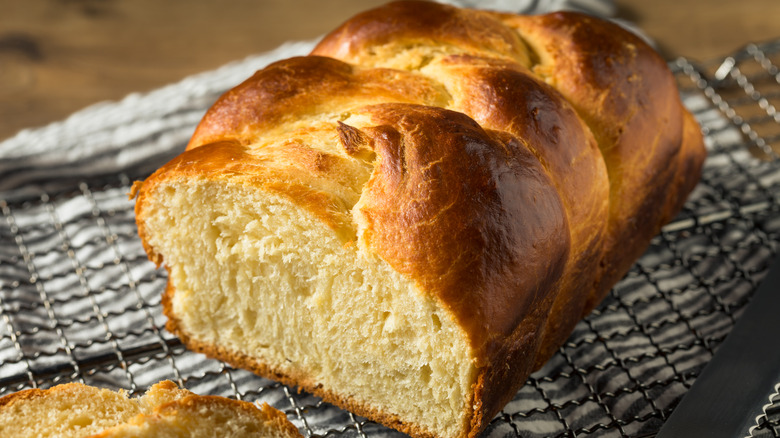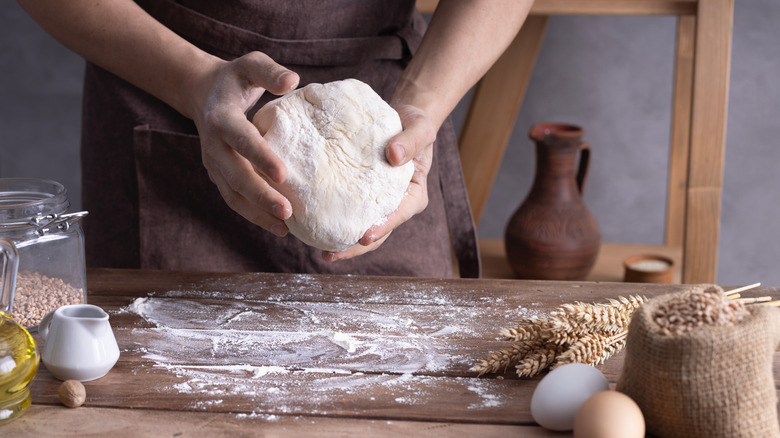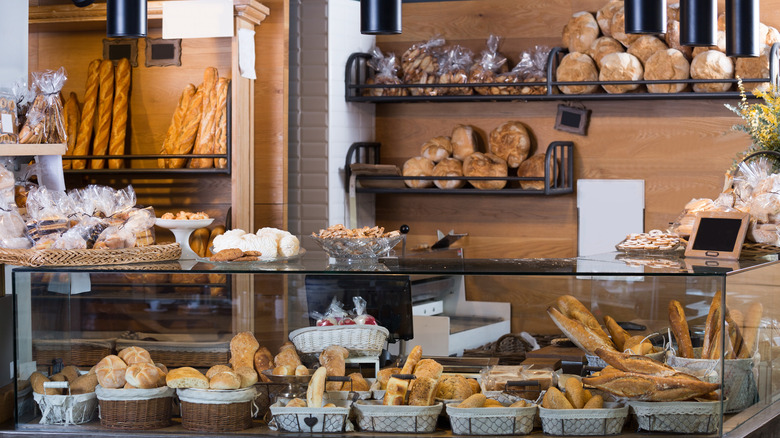Is Brioche A Bread Or A Cake?
If you find yourself in a better mood after munching on some tasty bread, rest assured that there's a very good scientific justification. UC San Diego Health explains that consuming carbohydrates helps with the release of serotonin, the body's all-natural mood booster. These mood-enhancing effects are even more pronounced when you're eating brioche, which St. Pierre Bakery describes as a subtly sweet yet richly textured bread that can be used in desserts, sandwiches, and many other recipes.
While brioche obsession now spans the globe, the bread remains a staple of French culinary culture, according to The Right Bake. It's believed the bread first became available in the Normandy region of Northwestern Europe at some point during the Middle Ages. Although it's considered an "everyday" bread by most people these days, it was once a rare treat to be enjoyed on special occasions. Brioche owes this high status to a specific baking technique that sets it apart from other bread recipes.
The secret ingredient is enriched dough
Looking at a simple bread recipe from King Arthur Baking Company and you'll see standard ingredients like flour, sugar, yeast, salt, and water. Now, compare that to a recipe for brioche, also courtesy of King Arthur Baking Company. While most of the ingredients are similar, the brioche recipe calls for the addition of eggs and dry milk. And bakers know that these ingredients are often associated with cake making as well.
As explained by Foodal, adding fat to a dough containing yeast turns it into enriched dough. On the other hand, the lean dough that's used to make traditional forms of bread usually consists of little fat if there's any in the recipe at all. The addition of fats like butter and milk infuses the dough with deeper flavors, as fats extend the fermentation process by slowing down the activity of the yeast. Fats also positively affect the texture by decreasing the length of gluten strands within the dough. These alterations put brioche into a baked goods category of its own.
Not a bread nor a cake but a ... viennoiserie?
French culinary tradition has three distinct categories when it comes to baked goods, as defined by Le Cordon Bleu. French bakeries are known as boulangeries, which are primarily focused on baking different types of bread. Then there are patisseries, which specialize in creating delectable French pastries consisting of flaky dough, rich cremes, and the occasional candied embellishment. The third category is viennoiserie, which is precisely where brioche fits in.
Viennoiserie is actually not a creation of France, as the style of baking originated in Vienna. However, the concept was introduced to France by August Zang, an Austrian who moved to Paris in the mid-1830s and brought along his passion for Viennese baked goods, per The Forge. Brioche and other types of viennoiserie have a link to both pastries and bread thanks to the addition of enriched dough. The result is a richer, flakier product that fits snugly between the satisfying crunch of a baguette and the luscious softness of a pastry.


